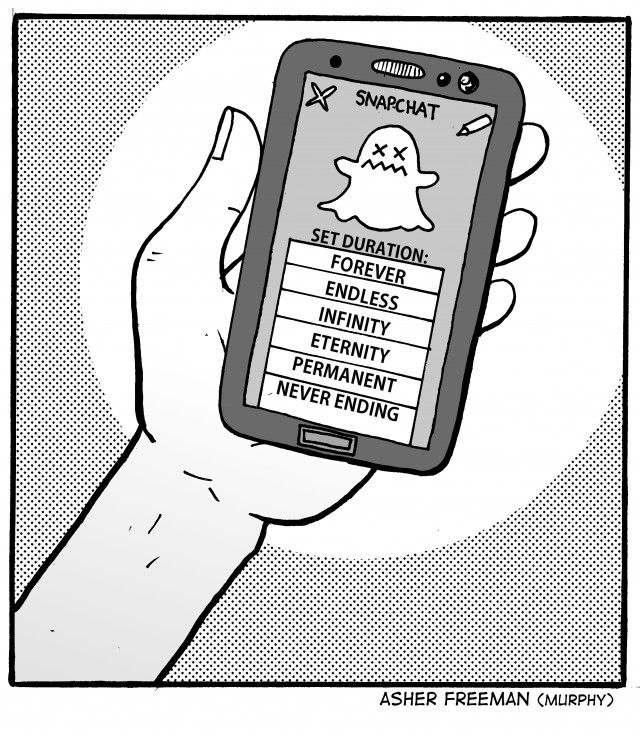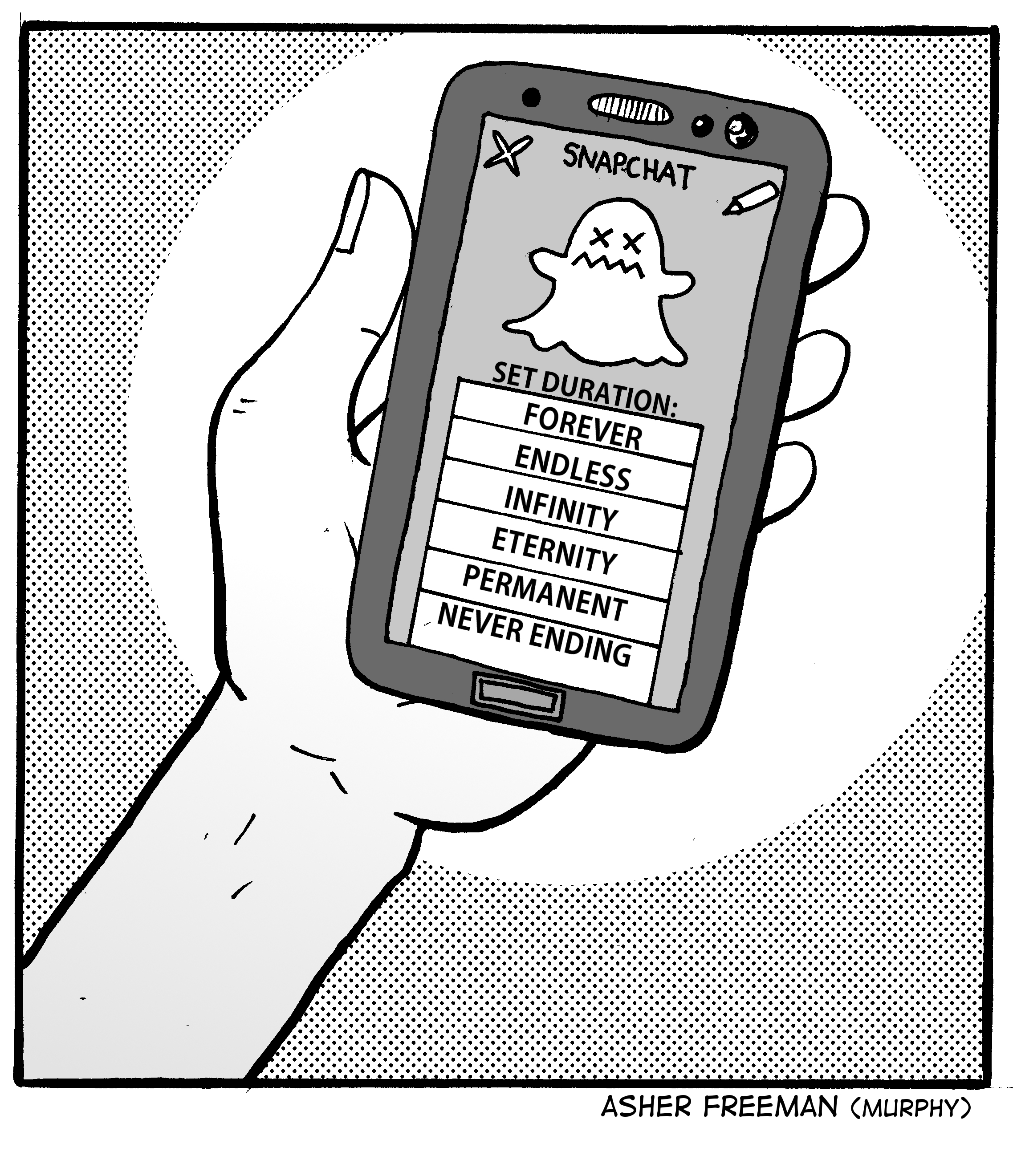 Pose, snap, send for 10 seconds, destroy. That is the beauty of Snapchat, right?
Pose, snap, send for 10 seconds, destroy. That is the beauty of Snapchat, right?
Wrong. Whatever happens on Snapchat stays in the public realm of online information. Snapchat, the two-year-old app that markets itself as one of the fastest, most private photo and video sharing outlets available, warns users not to “use Snapchat to send messages if you want to be certain that the recipient cannot keep a copy.”
We all know about the screenshot feature, which sends the user a notification when the snap recipient makes a copy of the vanishing photo. This was thought to deter recipients from keeping the photos which were meant to be destroyed, and it did for the most part because no guy wants to have to deal with the wrath of a girl who just found out her intended private photo was saved as a prize to show his buddies.
It didn’t take long for users to figure out that it took nothing more than changing the default screenshot trigger on your phone for the Snapchat app not to recognize the screenshot. After this revelation, multiple Facebook pages and websites, such as Snapchatleaked.com, were created, putting all of these intended private moments into a very public realm. Some Snapchatters were humiliated while others were amused. Regardless, each user was banking the privacy of his or her intimate or embarrassing moments on the trust of the recipient.
This particular website was live for less than 24 hours before it crashed because of the flood of traffic it received.
A Facebook page that went live at noon on Sunday called Best Snapchat Screenshots garnered 72,854 likes by 5 p.m. Upon doing a simple Facebook search of Snapchat Leaked, you will find at least eight pages without having to even finish typing the subject title.
All of these online media outlets prove that many recipients don’t respect or value the trust that the sender places in them and that people are hungry for the most embarrassingly private moments they can find. For some reason, even these public privacy infringements do not seem to encourage many people to censor themselves in their Snaps.
Aside from simply taking a screenshot in the 10 seconds or less a recipient has to view a photo, as of May, Snaps can now be recovered once they are sent and deleted. Despite Snaptchat’s previous claims that photos cannot be restored, Richard Hickman of Decipher Forensics found that it was possible to pull Snapchat photos from the data of the device used to take them. Rather than truly deleting photos, the Snapchat software affixes the extension .NOMEDIA to the file, which is stored in the memory of the device. While this method does make the media unviewable, to see it again one simply has to extract the file from the device and remove the .NONMEDIA from the name. A simple Google search proves that this is easy as pie.
Because of this ability to infringe on a person’s privacy, despite Snapchat’s previous claims and misleading ads that imply it is not possible, the Electronic Privacy Information Center filed a complaint with the Federal Trade commission on May 9, saying that Snapchat is deceiving its customers.
While it may be frustrating that nothing is truly private, we were happy to hear that since the EPIC complaint law enforcement officials have been looking into concerns about Snapchat being a platform for underage ‘sexting.’
While the sender is ultimately responsible for all content exchanged through the app, because the target demographic is users from 13 to 23 years old, Snapchat should be more open about the fact that there is no way to protect any content that is shared.
Snapchat has recently taken steps to protect its underage users. In June 2013, Snapchat Inc. released an app called Snapkidz for users under 13 years old, which allows them to take Snaps and draw on them but not to send them to others, although they can be saved locally to their device and sent outside of the app.
Just as it is on Facebook, Twitter and all other social networking sites, things on Snapchat are not kept secret. There is no definitive way to protect the privacy of the content that is shared.
Some Snapchat correspondence is nothing more than innocent fun, but we caution people to be conservative when sending Snaps. As far as what we define as conservative, if you would not be OK with it showing up on your Facebook wall, don’t send it. It’s as simple as that.





